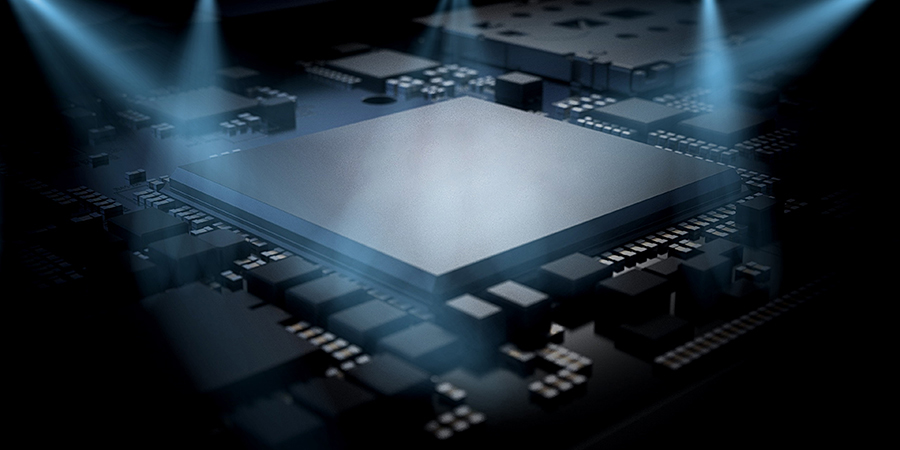The cellular chipset market has evolved, with more 5G chipsets becoming more available. These 5G chipsets are an integral part of smartphones, tablets, C-V2X devices, and CPEs, among other 5G-enabled products.
As per GSA, the number of commercially-available 5G processors/platforms grew nine-fold in 2020 and that trend has continued with an 88% growth during 2021. Another study predicts that the 5G chipset market is set to be valued at $67.2 billion by 2027. Growing demand for high-speed internet and broad network coverage as well as increasing cellular IoT connections and mobile data traffic are major growth factors of this market.
Snapdragon, Exynos, Kirin, Dimensity are some of the modern chipsets you must have heard of. To emphasize, a smartphone chipset also known as system on chip (SoC) essentially combines all basic components of a computer system (CPU, GPU, memory controller, modem, etc) into one integrated chip. SoC also provides a core set of functions ranging from cellular communication to WiFi and Bluetooth communications, general computing, power management, and peripheral interfaces.
In previous years, smartphone SoCs boasted integrated 4G modems, but with 5G already stepping into the game, integrated 5G modems and capabilities are now here too. Supporting both sub-6GHz and mmWave 5G capabilities now are flagship processors from leading manufacturers like Huawei, Qualcomm and Samsung.
2021’s flagship 5G phones have integrated modems, lending to more power efficiency when hitting peak data speeds and in 2022, as the global chip shortage continues with expectations of a better situation, smartphone device processors may get more improvements.
AP/SoC manufacturers vs in-house customized chipmakers
Qualcomm and MediaTek have been the classic default choices powering smartphone devices. Almost every smartphone or tablet is powered by either a Qualcomm Snapdragon or MediaTek chipset, but phone manufacturers such as Huawei, Samsung, and Apple are stepping up their game by designing their own in-house customized chips to stay competitive, profitable, and sustainable in the market.
Despite the current diversification in the chipset production, the two leading AP/SoC manufacturers are still way ahead of the smartphone chipset market ranking. Based on a Q2 2020 to Q3 2021 report by Counterpoint Research, MediaTek is in the lead at 40%, Qualcomm at 27%, Apple at 15%, UNISOC at 10%, Samsung at 5%, and Huawei’s HiSilicon at 2%.
5G chipset makers MediaTek and Qualcomm have announced technical milestones set to increase 5G spectrum utilization, as the two companies go head-to-head for leadership in the growing market for 5G modems. UNISOC, Samsung Electronics, and Huawei follow suit with their own 5G chipsets, while Apple points to 2023 as the earliest possible date for debuting its self-designed 5G modems.
Market overview
MediaTek takes on Qualcomm with a new flagship SoC for premium Android phones. MediaTek Dimensity 9000 is the first 5G SoC to be built on TSMC's 4nm process, which is also pioneering support for Bluetooth v5.3. Qualcomm also introduced a trio of 5G chips for inexpensive smartphones — Snapdragon 778G Plus, 695, and 480 Plus — that feature both ultra-fast 5G mmWave connectivity and sub-6GHz.
2022 is believed to be the last year when Qualcomm supplies all of the modems in iPhone models as it expects to supply just 20 percent of Apple's modem chips in 2023. This falls in line with the suggestive plans that Apple will self-supply up to 80% of the 5G modem chips of its devices during the said timeline, with the help of TSMC. On the other hand, a mid-range SoC for Android-based smartphones and tablets under UNISOC’s revamped 5G chipset line Tanggula, UNISOC T770 is the world’s first 6nm EUV 5G chip which incorporates a new-gen of AI dedicated acceleration engine.
Amid the global demand boom for chips, Samsung is poised for the best fourth quarter yet on strong semiconductor demand. The Exynos 5G modem supports major networks from sub-6GHz and mmWave spectrums to previous generations in a single chip. It is also paired with RF and supply modulator solutions — Exynos RF and Exynos SM — for reliable and power-efficient performance.
Affected by the US trade ban, Huawei was blocked access to its chip manufacturing partner TSMC, and it could only use its remaining stock of Kirin chips, opting for 4G Snapdragon chips for its smartphones. In 2022, Huawei will be bringing back its HiSilicon chips after its 2-year hiatus. To explain, Huawei's first flagship 5G SoC Kirin 990 5G uses the leading 7nm + EUV process. Previously announced as well is its 5G multi-mode chipset Balong 5000 and the Huawei 5G CPE Pro that provide the world's fastest wireless connections for mobile, home broadband, and on-the-go.
From a general perspective, the 5G chipset market is moderately fragmented, with involved companies in the current market scenario being highly competitive and mostly market incumbents. All of them have equally high R&D capabilities and strategies in place, allowing them to keep up and sustain the high consumer demand.
The global chip shortage situation will be better
Analysts predict that the global chip shortage affected by the pandemic, weather conditions, and the economic conflict between the US and China, is set to drag on until 2022. On a brighter side, the situation could improve from mid-year onwards as the global semiconductor industry is set for a big rebound, with sales expected to cross $600 billion driven by strong demand for consumer electronics.
Strategy Analytics said that application processor (AP) would focus more on 5G in 2022 to maximize their revenue and profit. 2022 would be a breakthrough year for budget smartphones where more chipset players would be seen entering the segment by introducing flagship features to deliver higher clock rate, downlink and uplink speeds, and AI performance.









